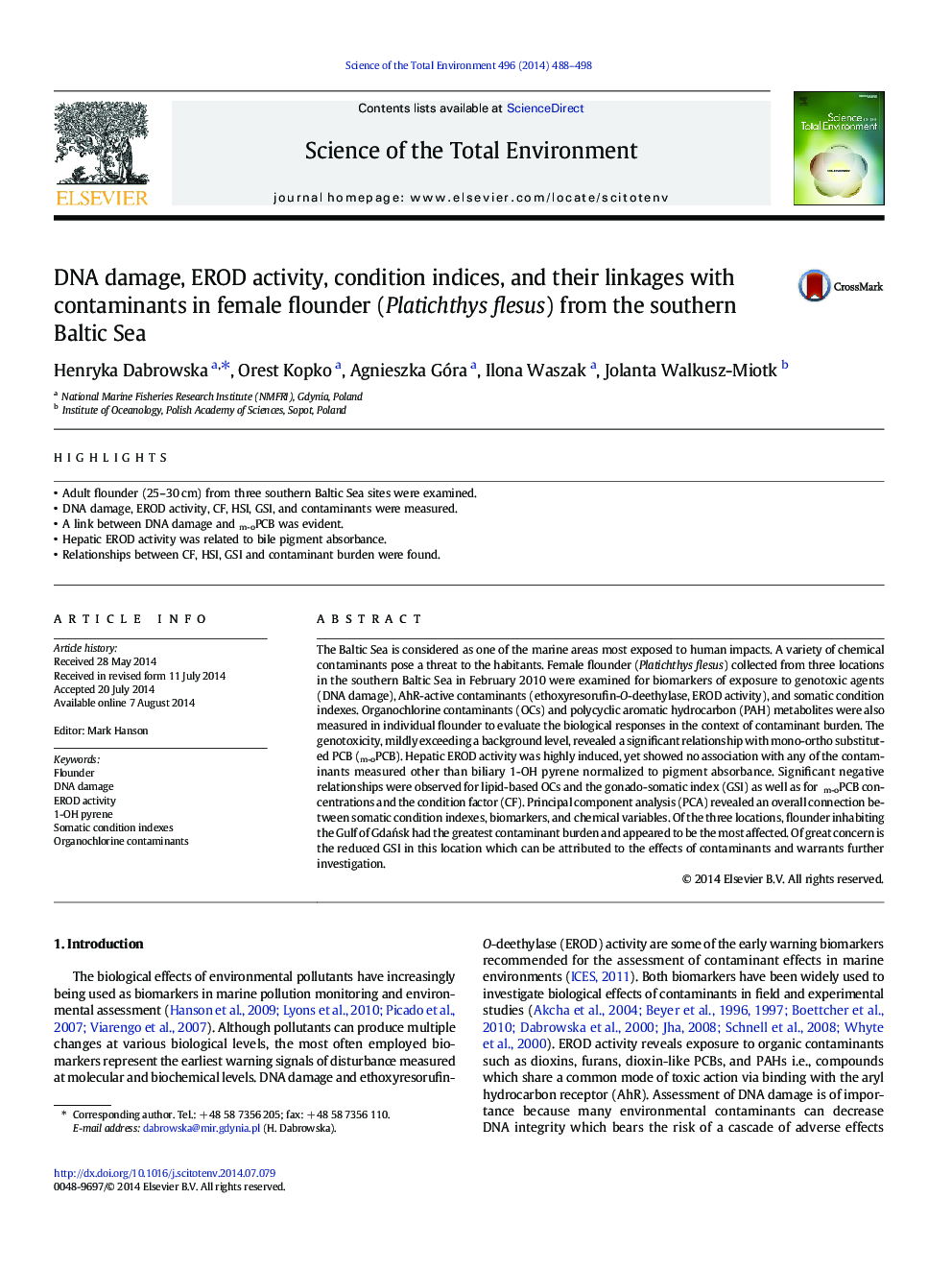| Article ID | Journal | Published Year | Pages | File Type |
|---|---|---|---|---|
| 6329493 | Science of The Total Environment | 2014 | 11 Pages |
Abstract
The Baltic Sea is considered as one of the marine areas most exposed to human impacts. A variety of chemical contaminants pose a threat to the habitants. Female flounder (Platichthys flesus) collected from three locations in the southern Baltic Sea in February 2010 were examined for biomarkers of exposure to genotoxic agents (DNA damage), AhR-active contaminants (ethoxyresorufin-O-deethylase, EROD activity), and somatic condition indexes. Organochlorine contaminants (OCs) and polycyclic aromatic hydrocarbon (PAH) metabolites were also measured in individual flounder to evaluate the biological responses in the context of contaminant burden. The genotoxicity, mildly exceeding a background level, revealed a significant relationship with mono-ortho substituted PCB (m-oPCB). Hepatic EROD activity was highly induced, yet showed no association with any of the contaminants measured other than biliary 1-OH pyrene normalized to pigment absorbance. Significant negative relationships were observed for lipid-based OCs and the gonado-somatic index (GSI) as well as for Æ©m-oPCB concentrations and the condition factor (CF). Principal component analysis (PCA) revealed an overall connection between somatic condition indexes, biomarkers, and chemical variables. Of the three locations, flounder inhabiting the Gulf of GdaÅsk had the greatest contaminant burden and appeared to be the most affected. Of great concern is the reduced GSI in this location which can be attributed to the effects of contaminants and warrants further investigation.
Related Topics
Life Sciences
Environmental Science
Environmental Chemistry
Authors
Henryka Dabrowska, Orest Kopko, Agnieszka Góra, Ilona Waszak, Jolanta Walkusz-Miotk,
